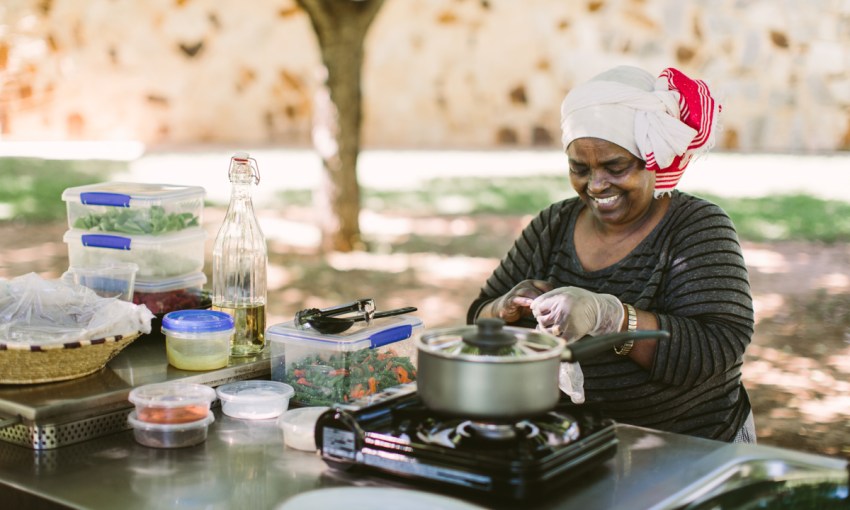The Ethiopian cooking queen of Adelaide brings her traditional cuisine to a gas-fired BBQ hotplate in Bonython Park.
Beef tibs and lamb ribs
For the past eight years, Yenenesh Gbere was able to leave the hard labour of managing Addis Ababa on Port Road to her son.
The restaurant was started by Yenenesh in 2005, and she handed it over so she could spend more time with her family and her church. That’s until recently, when she was called back to lend a temporary hand.
“The customers are all so excited to see me back cooking. They’re all my secret recipes,” says Yenenesh.
The restaurant, named for the Ethiopian capital (and Yenenesh’s hometown), specialises in authentic Ethiopian cuisine.

Yenenesh presents the final dish to us in the same way she would at Addis Ababa
Establishing it seemed like a natural decision to Yenenesh, who has always worked with food. Prior to immigrating to Australia in the early ’90s she ran a successful corporate catering service in Kenya. Once in Adelaide, Yenenesh would often sell food through the multicultural day stalls at the University of Adelaide alongside working in the Addis Ababa kitchen.
Setting up at the public BBQ in Bonython Park, under the shade of a tree, Yenenesh unpacks a variety of meats and vegetables. Lamb ribs, cubes of beef tenderloin and a tub filled with pureed garlic appear. When asked how much garlic was used to make the puree she replies “three of them” – referencing heads, not cloves.
The lamb ribs are placed on the barbeque first.
“You have to put the fat side down, so it becomes crispy,” she says. “Then we cover and leave it for a while.”
After a few minutes, a container filled with roughly chopped onions goes on top, and a liberal sprinkle of salt.
“We eat this dish usually when there is a celebration. It’s eaten alongside a lot of other dishes like vegetables and lentils and it’s eaten all together, at a party or gathering,”
Yenenesh says.
The lamb and onions are covered again, and left to sizzle.
When she’s in the kitchen at Addis Ababa, Yenenesh always takes care to explain to customers what they are eating, and the meaning behind the dishes.
“We have two options when customers order, they can either have the dish in a bowl for one person, or they can have it the traditional way, which is shared,” she says.
The traditional manner involves a selection of curries, laid decoratively on a piece of chewy sour flatbread called injera. Extra rolls of the injera are added on the side and everyone eats from the middle.
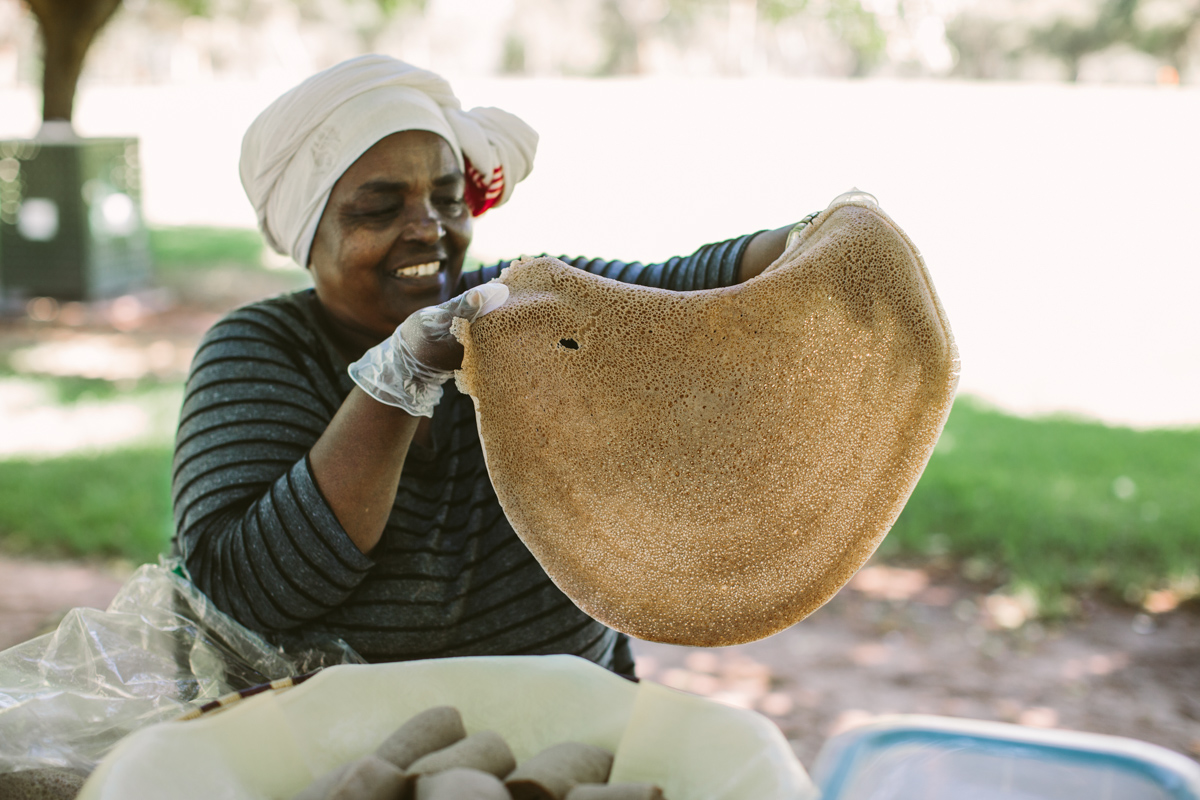
Injera, pre-roll
“In my home, it’s very symbolic that we all eat from the same plate. Each day people in the same community will gather at one [rotating] house for a meal,” says Yenenesh.
“Then, if we ever have trouble [socially], we remind each other of our bond, that we eat food from the same plate. That’s why it’s so important that we share.”
Yenenesh uncovers the food-filled BBQ, and scatters a tub of cubed beef tenderloin along with a cloud of ground cardamom seed and hot
chilli powder over it. Lastly, some green capsicum is added and it’s all given and a good sauté. After a few minutes, the dish is nearly ready, but not before a generous drizzle of spiced ghee – for extra flavour.
When asked for her favourite dish, Yenenesh replies “the vegetables”, referencing a side dish she has prepared for us. Traditionally the meal is made up of a number of small curries, so she insisted on preparing a balanced plate at the BBQ. The bonus dish contains chopped green beans and carrots, sliced onion and the 3 whole heads of pureed garlic.
The spirit in which she offers us this extra dish extends into Yenenesh’s life away from the kitchen. When she isn’t taking care of the restaurant for her son, you can find her volunteering as a translator, running errands for the elderly or raising money to build infrastructure for displaced children in Africa – so, one way or another, she’s feeding the community.
Beef Tibs and Lamb Ribs Inspired by Yenenesh Gbere
The restaurant recipe is top secret, but here’s a BBQ friendly version.
– 8 x lamb ribs
– 400g beef tenderloin, diced
– 2 x onions, roughly chopped
– 2 x green capsicums, chopped
– 2 tbsp ground cardamom powder
– 2 tbsp chilli powder* (adjust to taste)
– 1 tbsp salt
– Vegetable oil
– 2 tbsp ghee* (optional)
– Injera, to serve*
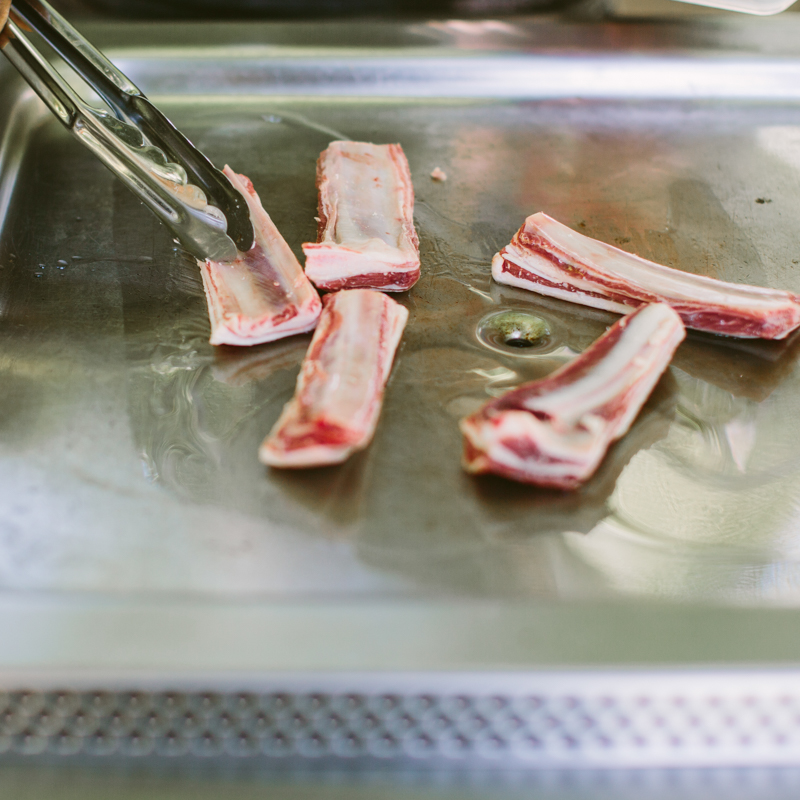
Place lamb ribs, fat side down, on a hotplate with a glug of vegetable oil. Render fat for 5-10mins until crisp.
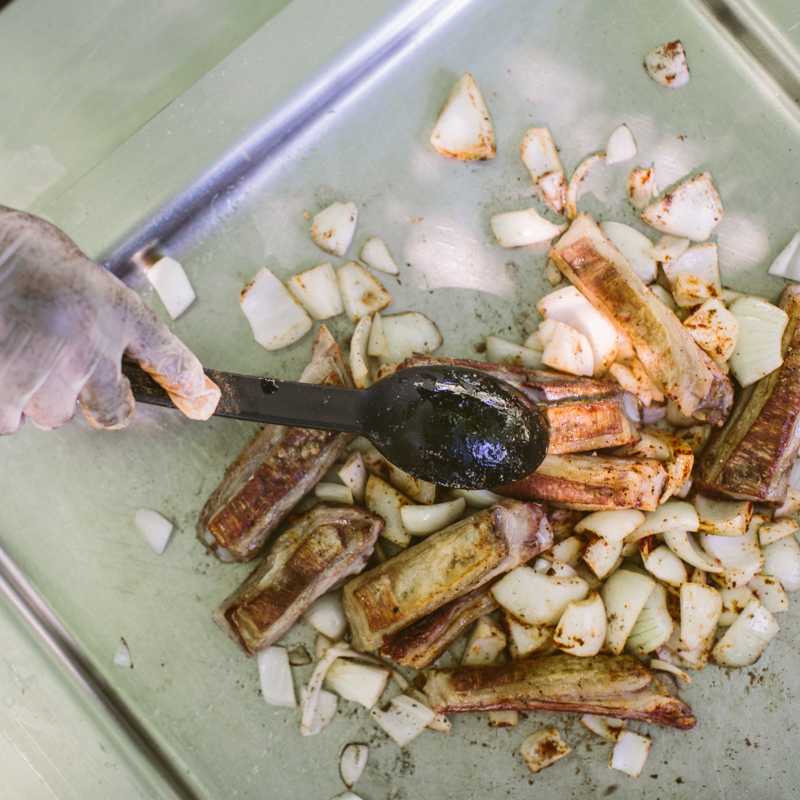
Top with onions and sprinkle over half the salt, toss lightly. Cover with a lid and allow onions to soften.
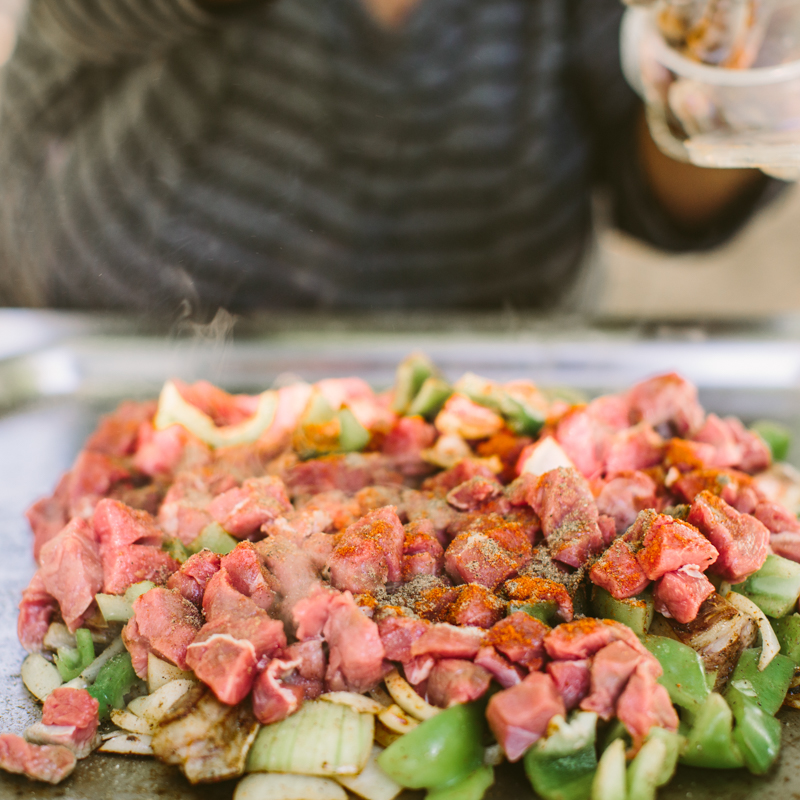
Once soft, add the beef cubes and season with remaining salt, cardamom and chilli. Add green capsicum and sauté well for 5-10 minutes, until the beef is cooked through.

If so inclined, finish the dish by mixing through a helping of ghee. Butter can be substituted if ghee can’t be found.

Serve with injera, rice or your choice of bread.
*For a more labour intensive and authentic version, substitute chilli powder for berbere (an African chilli spice mix) and ghee for niter kibbeh (recipes can be found online). Injera is unfortunately hard to come by and it can be difficult to source the main ingredient, teff flour. But the meal goes just as well with any kind of bread, or a side of rice.



